10 Nights / 11 Days
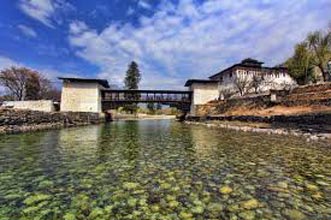
After arriving at Paro International Airport, you will be welcomed by your dedicated certified guide, and after immigration & baggage collection you will proceed to your hotel in Thimphu, capital of Bhutan. After refreshment you will start your trip according to below itinerary with certified guide and dedicated vehicle.
Tashichho Dzhong
It is a Buddhist monastery and fortress in the city of Thimphu Bhutan, on the western bank of the Wang Chu River. This was built in 1641 Zhabdrung Ngawang Namgyal acquired it but finding it too small, he built another one, known as the lower Dzong. Tashichho Dzong has been the seat of the government since 1952 and presently houses the throne room and offices of the king, the secretariat and the ministries of home affairs and finance.
Overnight Hotel in Thimphu
National Memorial Chorten
Memorial chorten has been designed to present it as “one of the most visible religious structures in Thimphu”. The Memorial Chorten, in the heart of the city, is designed is a Tibetan style chorten, also called as the Jangchup Chorten, patterned on the design of a classical stupa. The feature that is distinct here is the outward flaring of the rounded part to give the shape of a Vase, unlike a dome shape. National Memorial chorten is an extraordinary example of Buddhist architecture and artwork with its gorgeous paintings and intricate sculptures. You will find elderly Bhutanese people circumambulating this throughout the day.
Overnight Hotel in Thimphu
Kuensel phodrang (Buddha Point)
Buddha Dordenma is massive statue of Shakyamuni measures in at a height of 51.5 meters, making it one of the largest statues of Buddha in the world. The statue is made of bronze and is gilded in gold. 125,000 smaller Buddha statues have been placed within the Buddha Dordenma statue, 100,000 8 inch tall and 25,000 12 inch tall statues respectively. Each of these thousands of Buddhas has also been cast in bronze and gilded. The throne that the Buddha Dordenma sits upon is a large meditation hall.
The Buddha Dordenma is located atop a hill in Kuensel Phodrang Nature Park and overlooks the Southern entrance to Thimphu Valley. The statue fulfills an ancient prophecy dating back to the 8th century A.D that was discovered by Terton Pema Lingpa (Religious Treasure Discoverer) and is said to emanate an aura of peace and happiness to the entire world.
Takin preserve National Park
Motithang Takin (National animal) Preserve National park is located in the Motithang in Thimphu, a wildlife reserve area for Takin. This was started as a mini zoo, later the King of Bhutan felt that it was improper for a Buddhist country to confine animals for religious and environmental reasons. He therefore ordered the release of the animals and the closure of the mini-zoo on converted into a preserve. The reason for declaring takin as a National Animal of Bhutan on 25 November 2005 (Budorcas taxicolor) is attributed to a legend of the animal’s creation in Bhutan in the 15th century by Lama. The preserve also holds a few sambar and barking deer.
Folk Heritage Museum
Folk Heritage Museum was established in 2001 and provides visitors and tourists with fascinating insights into the Bhutanese material culture and way of life. The Folk Heritage Museum is set inside a three storied, 19th century traditional house. The museum gives you a glimpse of the traditional Bhutanese lifestyle, in addition to artifacts from rural households.
National handicrafts emporium
The National Handcrafts Emporium is a state run Handicrafts showroom in 4 different cities of bhutan. The emporium is run by the National Woman’s Association of Bhutan as a Non-Government Organization that is run under the royal supervision of Her Royal Highness Ashi Sonam Choden Wangchuk.The Handicrafts Emporium showcases the finest handicrafts of the country and supports one of Bhutan’s most important income generating activities. The products on sale at the emporium include; locally manufactured hand woven fabrics, wooden masks, cane and bamboo products, traditional wooden utensils such as cups and bowls, handmade paper, statuettes, prayer wheels etc.
National institute of Zorig Chusum
The Institute Zorig Chusum falls under the national technical training authority which was created in 1990 to improve the quality of vocational training. The art taught today, in Bhutan was introduced in the fifteenth century, by Terton Pema Lingpa. These traditional crafts represent hundreds of year’s knowledge and ability that has passed down the generations. Here you can see the amazing skills for art and craft.
National library
The National Library of Bhutan (NLB) was established in 1967 under the patronage of HM Queen Ashi Phuntso Choden (1911–2003), with a small collection of precious texts, for the purpose of “Preservation & Promotion of the rich cultural & religious heritage” of Bhutan. This is located in the Kawajangsta area of Thimphu, just above the Royal Thimphu Golf Course, nearby Bhutan Folk Heritage Museum.
Overnight Hotel in Thimphu
Dochula Pass
Dochula Pass known as the Druk Wangyal Chortens- the construction of these 108 chortens was commissioned by the eldest Queen Mother, Her Majesty Ashi Dorji Wangmo Wangchuk. The pass is also popular spiritual destination for both locals and tourists because an important (Druk Wangyal Lhakhang) temple is located on the crest of Dochula pass. It offers a stunning 360 degree panoramic view of Himalayan mountain range. The view is especially scenic on clear, winter days with snowcapped mountains forming a majestic backdrop to the tranquility of the 108 chortens gracing the mountain pass. Bhutanese families enjoy visiting the pass during holidays and weekends to picnic and simply enjoy the scenery. For tourists this is ideal location to capture beautiful pictures of Himalayan mountain range during clear, warm days.
Punakha Dzong
It is also the country’s most beautiful Dzong. It is the winter residence of Bhutan’s Central Monastic Body led by HH the Je Khenpo. Punakha Dzong was the administrative Centre and the seat of the Government of Bhutan until 1955, when the capital was moved to Thimphu. Punakha Dzong is built at the confluence of Pho Chhu & Mo Chhu Rivers and is an especially beautiful sight on sunny days with sunlight reflecting off the water onto its white-washed walls. Punakha Dzong is notable for containing the preserved remains of Zhabdrung Ngawang Namgyal, the unifier of Bhutan as well as a sacred relic known as the Ranjung Karsapani. The wedding of the King of Bhutan, Jigme Khesar Namgyel Wangchuck, and his fiancé, Jetsun Pema, was held at the Punakha Dzong, on 13 October 2011
Overnight Hotel in Punakha.
Chimi Lhakhang Temple
Chime Lhakhang is a Buddhist monastery in Punakha, stands on a round hillock.The monastery is the repository of the original wooden symbol of phallus that Kunley brought from Tibet. This wooden phallus is decorated with a silver handle and is used to bless people, who visit the monastery on pilgrimage, particularly women seeking blessings to be get children.The Chime Lhakhang square in shape with a golden spire. It is a golden yellow roofed building. It has a row of prayer wheels and its exterior walls are embedded with slates carved with images of saints. Near the entrance to the Lakhang, there is this small chorten which marks the location where the demoness was subdued by Lama Kunley. The prayer hall inside the monastery has tantric paraphernalia, thangkas, bells, drums, horns, dorjis and a kangd. The statue of Kunley, in a monk’s robe, is centrally located at the altar here, in a reclining position with a ceramic statue of his dog Sachi. Women who come to the monastery seeking blessings of children get hit on the head by the presiding Lama with a ivory, wood and bone phallus.
Chendebji chorten
Located 2 kilometers away from the village of Chendebji is the Chendebji Chorten, a large Buddhist Stupa. The Chendebji Chorten is a large white structure built in likeness to the famous Bodhunath Stupa located in Kathmandu in Nepal. The Chorten was constructed by Lama Shinda from Tibet in the 19th century AD. The Stupa is believed to have been constructed at a spot where an evil spirit was subdued by the Lama. Another striking feature of the Temple is the eyes painted at the four cardinal points of the temple.
Trongsa Dzong
Trongsa Dzong is the largest dzong fortress in Bhutan, located in Trongsa, in Trongsa district, in central part of Bhutan. This Dzong is located above the fast flowing Mandge Chu in a unique setting that has been described as “the most spectacularly sited dzong in Bhutan with a sheer drop to the south that often disappears into cloud and mist. The dzong is a massive structure with many levels, sloping down the contours of the ridge on which it is built. Because of the dzong’s highly strategic position, on the only connecting route between east and west, the Trongsa Penlop was able to control effectively the whole of the central and eastern regions of the country from here.
Overnight Hotel in Trongsa
Jakar dzong
Jakar Dzong It is located on a ridge above Jakar town in the Chamkhar valley of Bumthang. It is built on the site of an earlier temple established by the Ralung hierarch Yongzin Ngagi Wangchuk (1517–1554) when he came to Bhutan. The approach to the dzong is made on foot along a stone-paved path. The entrance leads into a narrow courtyard surrounded by administrative offices. The utse is on the east side of the courtyard, and beyond that is the monks’ quarters and the district court. At the west end of the dzong is a slightly larger courtyard surrounded by administrative offices. Behind here, outside the main dzong, is a half-round ta dzong (watchtower). Even if the chapels are closed, it’s a worthwhile climb for the views of the Chokhor valley from the front courtyard.
Jambay Lhakhang
Jambay Lhakhang is one of the oldest temples in the kingdom. It was founded by, Songtsen Gampo, a Tibetan King in the 7th century AD. The king was destined to build 108 temples known as Thadhul- Yangdhul (temples on and across the border) in a day to subdue the demoness that was residing in the Himalayas. The temple is one of the two of the 108 built in Bhutan. A second is located in Paro, the Kichu lhakhang also built on the same day. Jambay lhakhang also houses more than one hundred statues of the gods of Kalachakra built by the first king, in 1887.
Kurjey Lhakhang
Kurjey Lhakang, also known as Kurjey Monastery, is located in the Bumthang valley in the Bumthang district of Bhutan. Kurje Lhakhang consists of three temples this is the final resting place of the remains of the first three kings of Bhutan. Also, a large tree behind one of the temple buildings is believed to be a terma that was left there by Padmasambhava. The one on the right was built in 1652 on the rack face where Guru meditated in the 8th century. Second temple is built on the site of a cave containing a rock with the imprint of Guru’s body and is therefore considered the most holy. The third temple was built in 1990s by Ashi Kesang, the Queen Mother. These three temples are surrounded by a 108 chorten wall
Namkhe nyingpo goemba
Namkhe Nyingpo Goemba is located on a hill just east of the town of Jakar, the administrative center of the Bumthang district.The prayer hall of the monastery contains imposing statues of Guru Rinpoche/ Guru Padmasambhava, Chenresig and Sakyamuni. If you happen to be visiting the monastery in the evening between 4 and 6 pm do attend the mass debate that takes place in the courtyard of the Namkhe Nyingpo Goemba, where monks take part vociferously in a debate about their theological beliefs with a stamp of the foot and victorious slaps. These debates do make for some interesting watching but we would ask you to refrain from photographing the same as they don’t appreciate any disturbances during their debates.
National handicrafts emporium.
The National Handcrafts Emporium is a state run Handicrafts showroom in 4 different cities of Bhutan. The emporium is run by the National Woman’s Association of Bhutan as a Non-Government Organization that is run under the royal supervision of Her Royal Highness Ashi Sonam Choden Wangchuk. The Handicrafts Emporium is a showcase the finest handicrafts of the country and supports one of Bhutan’s most important income generating activities. The products on sale at the emporium include; locally manufactured hand woven fabrics, wooden masks, cane and bamboo products, traditional wooden utensils such as cups and bowls, handmade paper, statuettes, prayer wheels etc. most of the good are manufactured in the winter months, since business is slow for farmers in the winter months many families turn to the production of handicrafts goods to supplement their income during the lean winters.
Overnight Hotel in Bumthang
Tang Valley
The Tang Valley is the most isolated and remote of the 4 valleys that make up the district of Bumthang. The valley is located about 10 kilometers away from Jakar along the east-west road towards the town of Ura. After travelling a few kilometers we will turn off on to a gravel road that continue a further 7 kilometers along to view the Kunzangdrak Goemba monastery, was established in 1488 by Trenton Pema Lingpa. The monastery can be accessed after completing a though 2 hour climb along the hill. We will then continue another few kilometers along the road towards the Tang Rimpochen Lhakhang,which is located below a huge rock face. The Lhakahng is built over site where the Guru Rinpoche is said to have meditated during his time in Bhutan. The Lhakhang (temple) derives its name from Tag Rinpoche (impression of tiger stripes) which are visible on the rocks behind the temple. Another rock in front of the temple is said to bear an imprint of the Gurus Body along with that of his consort.
Burning Lake
The Burning Lake, Mebar Tsho is located along the way to the Tang village over the feeder road under Bumthang valley. It takes approximately 30 minutes’ drive to the Mebar Tsho from Chamkhar town. Mebar Tsho is considered one of the most sacred sites in the region as it is related to the renowned religious treasure reveler (Terton) Terton Pema Lingpa. Pema Lingpa is considered an incarnated disciple of Padmasambhava who discovered treasure within the lake in late 15th century.
Today this small fresh water lake is a sacred pilgrimage site for the Bhutanese with bright multicolored prayer flags surrounding it and a small altar dedicated to Terton Pema Lingpa has also been set up. On auspicious days people offer butter lamps at the lake. Many tourists visit the site to observe spectacular beauty of this important historical and religious site.
Overnight Hotel in Bumthang
Gangtey Monastery
The Gangtey Monastery generally known as Gangtey Gonpa, is an important monastery. It is located in the Wangdue Phodrang District in central Bhutan, is perched a top a small hill that rises from the valley floor. The Monastery is surrounded by a large village inhabited mainly by the families of the 140 Gomchens who take care of the Monastery.The entrance to the monastery displays a large painting of Hayagriva. The monks’ ‘dwellings are all around the courtyards while the central tower houses five temples. The porch of the central tower contains paintings of cosmic Mandalas, a Wheel of life, Zangtopelri – The Heaven of Guru Rinpoche, as well as a rare (In Bhutan) picture of the mythical land of Shambala shown inside its circle of snow-capped mountains.
Overnight Hotel in Gangtey
The Phobjikha valley
The Phobjikha Valley is a vast U-shaped glacial valley, also known as Gangteng Valley,where the black-necked cranes – visit central Bhutan to roost, circling the monastery three times on arrival and repeating this circling when returning to Tibet. Black-necked cranes in Bhutan are winter visitors during late October to mid-February to the Phobjikha Valley as well as Ladakh, India, and Arunachal Pradesh, India. They arrive from the Tibetan Plateau, where they breed in the summer.The phobhijikha valley is popular for its scenic splendor and cultural uniqueness. The valley is rich in faunal biodiversity and has, apart from the globally threatened black-necked cranes Grus nigricollis, 13 other globally threatened species the valley is enclosed by the mountain ranges, which experience snowfall.
Overnight Hotel in Wangdue
Simtokha Dzong
It is a small dzong located about 5 km south of the capital of Thimphu; this was built in 1629 by Ngawang Namgyal. Simtokha Dzong known as Sangak Zabdhon Phodrang (Place of the profound meaning of secret mantras), it is often said the first Dzong built in Bhutan. However, there were dzongs in Bhutan in early 1153, but Simthoka Dzong was fist Dzong built by the Shabdrung, is the oldest that has survived as a complete structure and it the fist administrative facilities. It is the home of the institute for language & culture studies, the students are both monk & lay people. You can find countless statues and paintings of various Buddhas, deities and religious figures including The Eight Manifestations of Guru Rimpoche, Jampelyang the Bodhisattava of Wisdom, Shakya Gyalpo the Buddha of Compassion and many more, all carved and painted in exquisite detail.
Rinpung Dzhong (Paro Dzong)
The construction of the Rinpung Dzhong (Paro Dzong) began in 1644 on the order of Zhabdrung Ngawang Namgyal, the unifier of modern-day Bhutan. Unlike most of the other dzongs in Bhutan, it survived the massive 1897 earthquake though it was damaged by fire in 1906. Paro Dzong’s full name is Rinpung Dzong, which means ‘the fortress of the heap of jewels’.
Ta Dzong (National Museum)
Ta-Dzong, an ancient watchtower, which now houses the National Museum. It is located about five and a half kilometers away from the main town of Paro and 500 feet from the Rinpung Dzong located below the museum. Cameras are not allowed inside the museum, but you can photograph the ta dzong and surrounding grounds.
Overnight Hotel in Paro
Tiger Nest Monastery
Tighter Nest Monastery (Taktsang Lhakhang) is Bhutan’s most iconic landmark and religious site. The name Taktsang translates to “The Tiger’s Nest”. This temple is one of the most holy sites in the kingdom . It is believed that Padmasambhava (Guru Rinpoche) flew to this location from Tibet on the back of a tigress from Khenpajong. This place was consecrated to tame the Tiger demon, was first built in 1692 at a cave where Guru Rimpoche meditated in a cave, in the 7th century A.D. for 3 years, 3 months, 3 days and 3 hours in order to subdue evil demons residing within it. The cave has been considered a sacred site ever since and many famous saints have travelled to meditate in it.
In order to arrive at the temple you must trek for around 2-3 hours through beautiful, shady pine forests that is colorfully festooned with moss and prayer flags. On many days, clouds shroud the monastery and give an eerie feeling of remoteness. No trip to Bhutan would be complete without a visit to this remarkable heritage site.
Kyichu Lhakhang
Kyichu Lhakhang was originally a small structure at the time of its establishment in the 7th century by the Tibetan Emperor Songtsän Gampo. It is considered to be one of the 108 border taming temples he built. It is believed the temple was visited by Padmasambhava in the 8th century and he concealed many spiritual treasures here. Further the temple was looked after by the Lhapa Kagyu tradition and that during the 13th century it was handed over to a descendant of Phajo Drugom Zhigpo’s son Nyima. There is a belief that the two orange trees in the courtyard of Kyichu Lhakhang bear fruit throughout the year.
Druk choeding
Druk choeding also known as Tshongdoe Naktshang, the quiet and peaceful Druk Choeding is the town temple. It was built in 1525 by Ngawang Chhogyel (1465–1540), one of the prince-abbots of Ralung in Tibet and an ancestor of the Zhabdrung Ngawang Namgyal. The main statue is of a seated Jampa (future Buddha). Also present are the local protectors Gyenyen, Jichu Drakey and Hong Gyelri, surrounded by a fearsome collection of old Bhutanese
Dumtse Lhakang
To the west of the road leading to the National Museum is Dumtse Lhakhang, an unusual chorten-like temple that was built in 1433 (some sources say 1421) by the iron-bridge builder Thangtong Gyalpo. The temple was built to subdue a demoness and so is chained firmly to the ground. Its three floors represent hell, earth and heaven, and hold some of the finest murals in Bhutan. It’s essential to bring a good torch. Your travel agency may need to have Dumtse listed on your permits, so mention you’d like to stop here in advance.
Overnight Hotel in Paro
Today your trip is over and after breakfast your guide will take you to Paro International Airport to board your departure flight, and you return back with lots of good memories
We Orange Valley Tours & Travel Agency, we are focused on providing Tour & Travel services with the highest levels of customer satisfaction – we will do everything we can to meet your expectations.
With a variety of offerings to choose from, we’re sure you’ll be happy traveling with us. If you have any comments, questions, or if you are interested to do your tour with our agency, please feel free to contact us. Read More...
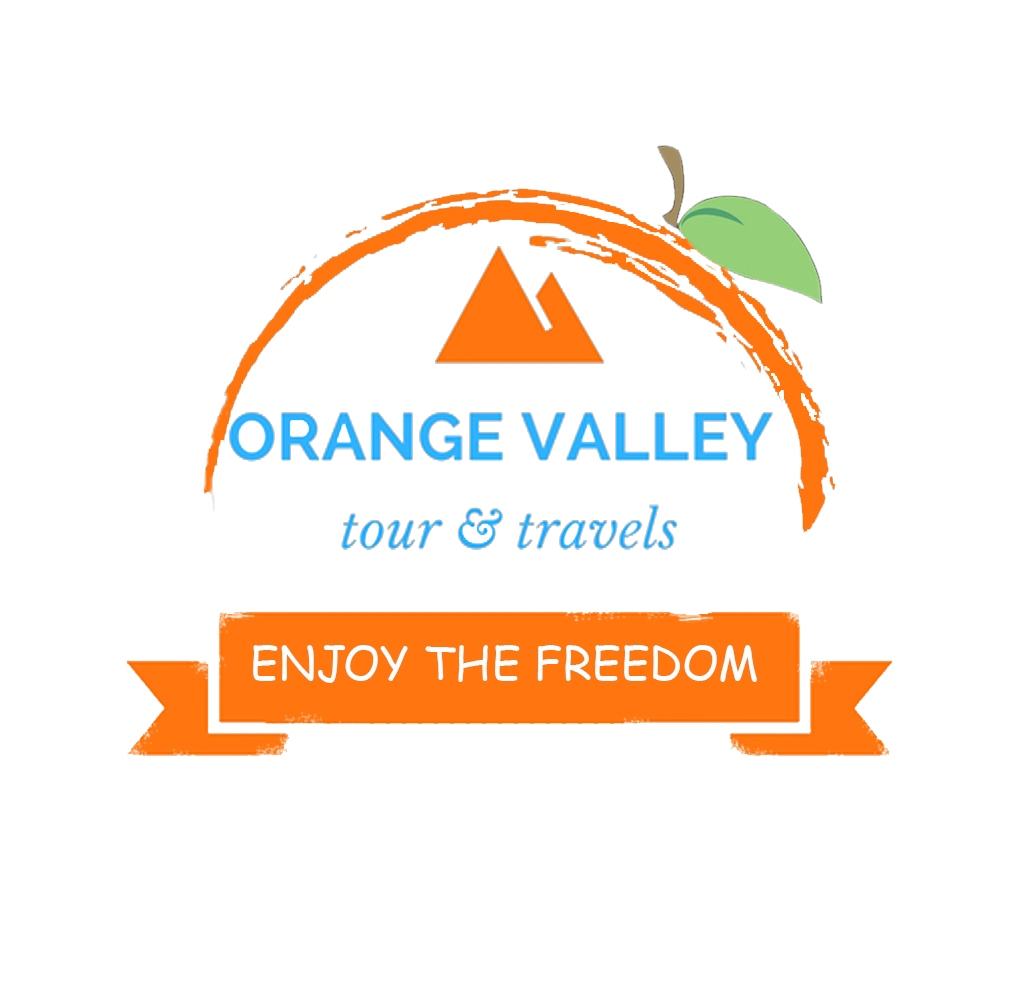
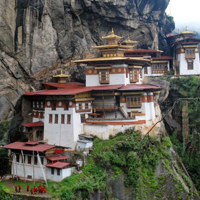 6D/5N
6D/5N
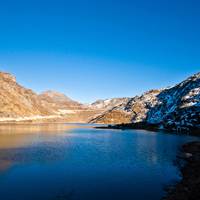 8D/7N
8D/7N
 9D/8N
9D/8N
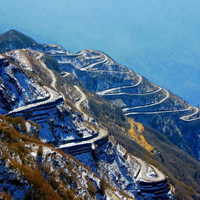 6D/5N
6D/5N
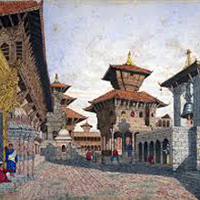 8D/7N
8D/7N
 7D/6N
7D/6N
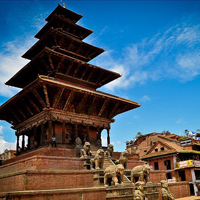 7D/6N
7D/6N
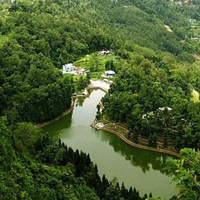 6D/5N
6D/5N
 7D/6N
7D/6N
 11D/10N
11D/10N
 11D/10N
11D/10N
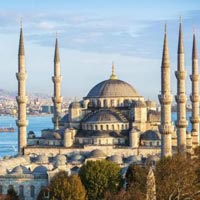 11D/10N
11D/10N
 11D/10N
11D/10N
Bhopal - Pachmarhi - Jabalpur - Gwalior - Chhatarpur - Tikamgarh - Umaria
 11D/10N
11D/10N
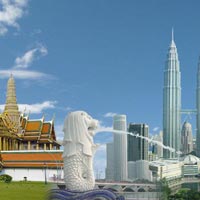 11D/10N
11D/10N
 11D/10N
11D/10N
 11D/10N
11D/10N
Best of Gujarat With Wildlife Tour
Ahmedabad - Bhavnagar - Diu - Junagadh - Rajkot - Bhuj - Jamnagar - Dwarka - Mumbai
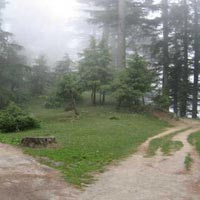 11D/10N
11D/10N
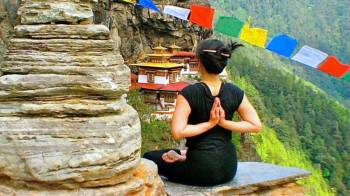 7D/6N
7D/6N
 15D/14N
15D/14N
Himalayan Odyssey 14 Nights - 15 Days Tour
Thimphu - Paro - Wangdue Phodrang - Punakha - Mongar - Bumthang - Trashigang
 10D/9N
10D/9N
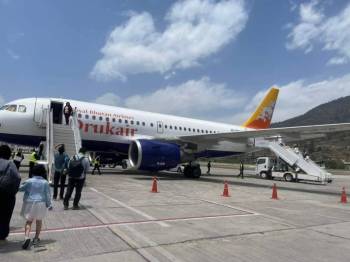 16D/15N
16D/15N
15 Nights/16 days Merak Sakteng Trekking..
Thimphu - Paro - Punakha - Bumthang - Trashigang
 10D/9N
10D/9N
Thimphu - Paro - Wangdue Phodrang - Punakha - Trongsa - Bumthang
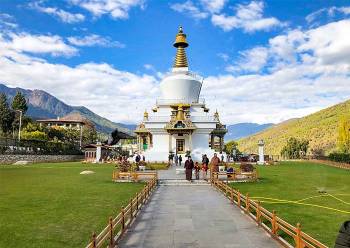 5D/4N
5D/4N
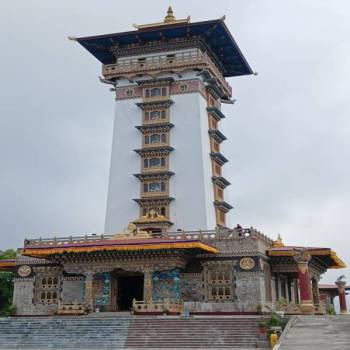 7D/6N
7D/6N
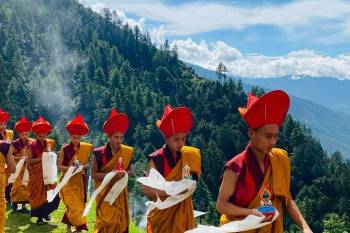 5D/4N
5D/4N
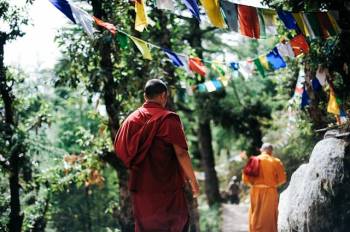 9D/8N
9D/8N
Mystical Himalayas Nepal - Bhutan Discov..
Pokhara - Chitwan - Thimphu - Paro - Patan